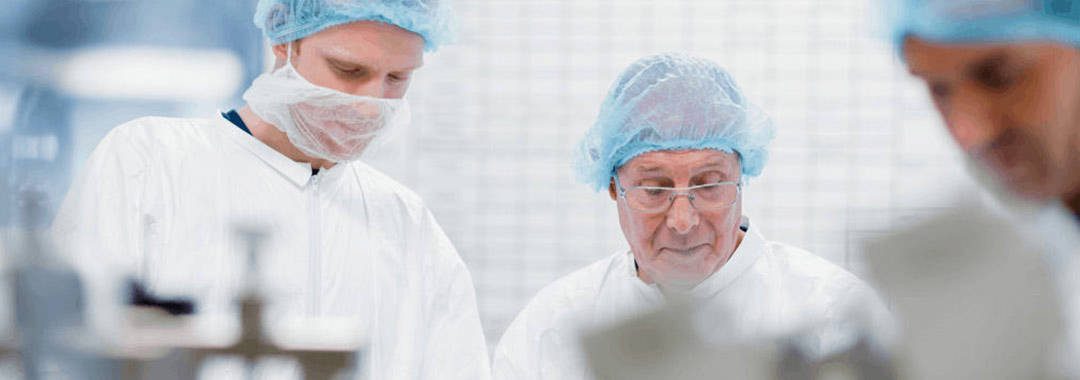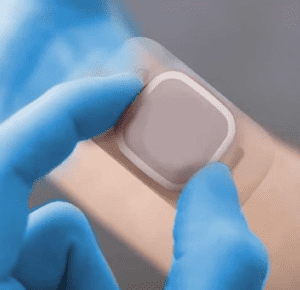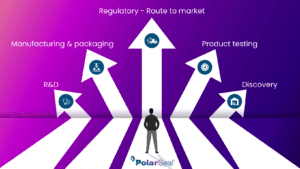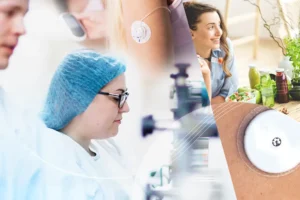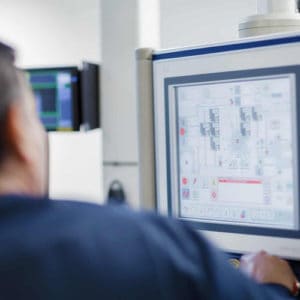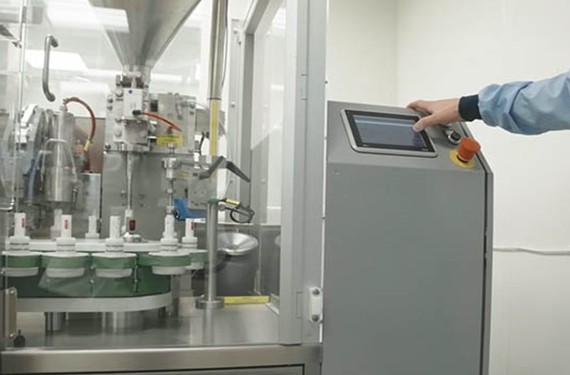Tube filling is used in a range of industries, from the cosmetics industry to the medical device industry, to produce important pharmaceutical, and other specialist liquid based products, or wet medical and consumer healthcare devices.
It is an essential sub-sector/segment of the medical manufacturing industry allowing for optimized delivery of medicines and other liquid formulated medical products.
We outline the benefits, equipment used and the applications for wet medical devices through liquid formulation, filling, and more!
What is tube filling & what are the different types?
Tube filling refers to the process used to fill liquid products like ointments, pastes, gels and other semi-liquid or liquid formulations and chemical products into tubes and other forms of dispensers. This process is used when manufacturing a range of products, particularly in the medical industry where reliable and accurate filling systems are required.
Some common examples of medical products made using liquid filling systems include pastes, creams, ointments, gels and wound care products.
Tube filling machines accurately deposit materials into types of tubes, usually made of plastic, aluminum and laminate. Labelling of filled tubes can also be performed by the same tube filling line to optimize the packaging process further. These machines are also responsible for filling other types of containers.
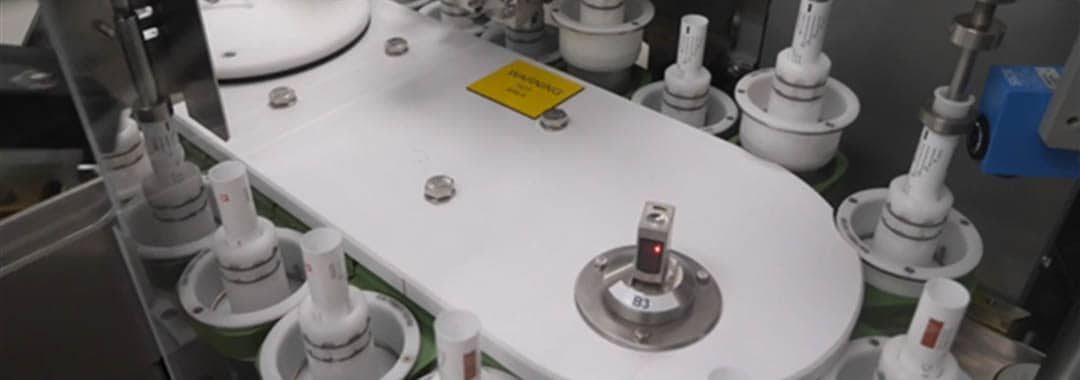
Vial filling
Tube fillers can also be used to fill vials – commonly used across the healthcare sector to package different types of liquid medication and samples. Vials can be filled under cleanroom or sterile conditions depending on the requirements of the product.
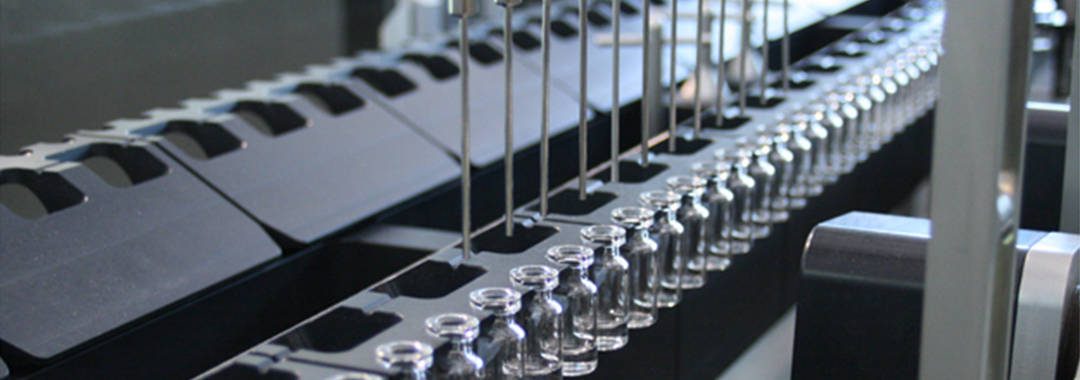
Jar filling
Jars are often used to store chemicals and substances in a laboratory setting, but they are also used to package consumer medical products, usually liquid or semi solid in composition. Tube filling machines are also capable of filling jars and sealing them for distribution.
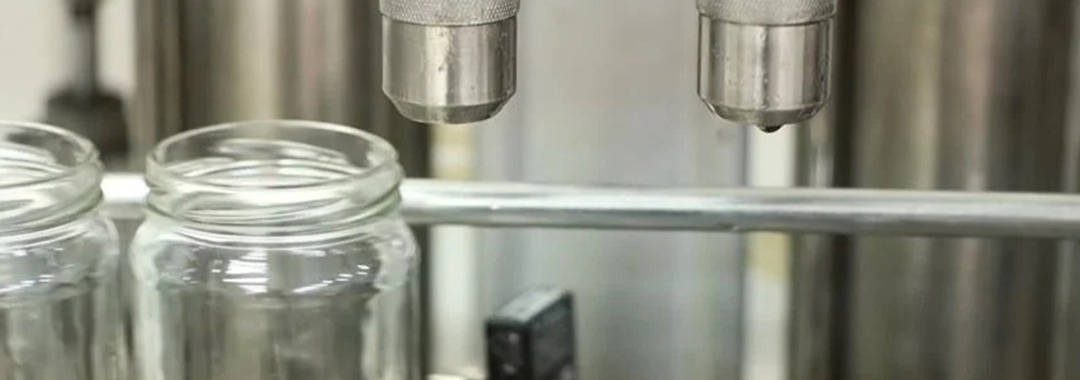
Bottle filling
Tube filling machines are able to fill different types of bottles used to package consumer medical products, and store liquid, semi-liquid or solid substances. Once filled, bottles are usually sealed and capped by the filling machine.
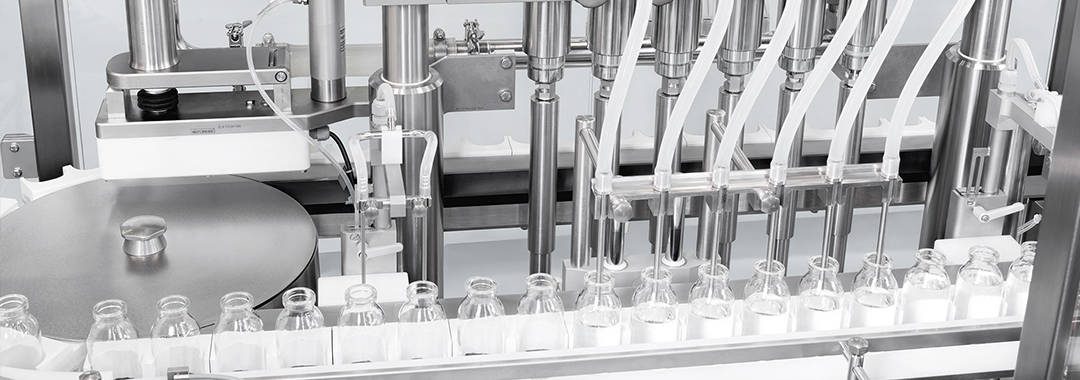
Pouch filling
Pouches are used throughout the healthcare industry to house chemicals and solutions that are distributed to patients or used for other purposes.
Particular types of filling machines are able to fill pouches. The right medical manufacturer offering contract manufacturing may also help you design, prototype and produce an appropriate pouch, and assist with liquid formulation to fulfill the filling process.
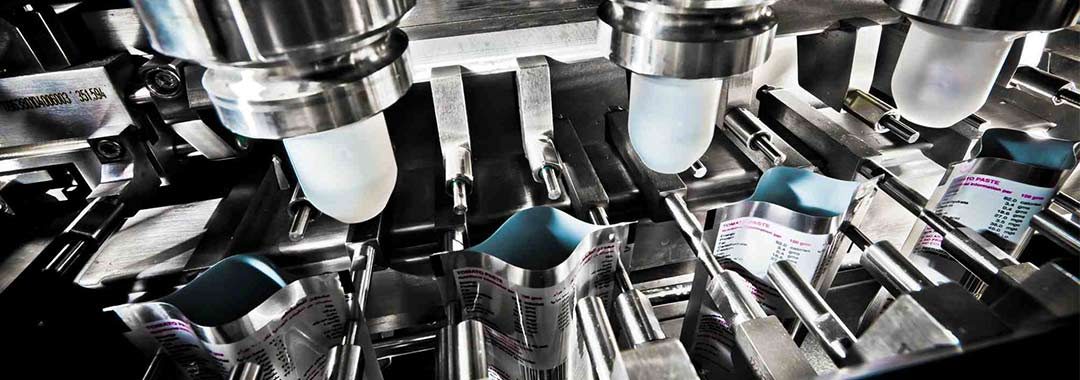
How do tube filling machines work?
Tube filling machines are designed to provide clean, fast and accurate filling of tubes. They rely on pressure to fill packaging quickly, and with precision. Liquid is stored in tanks above the bottles that require filling. This allows gravity to act as the force drawing liquid down into the system.
Other system components are also important to ensure an effective and tailored filling process. For example, filling nozzles, discharge units, the hopper and dosing pump are critical parts of a tube filling system, each designed with an intended purpose.
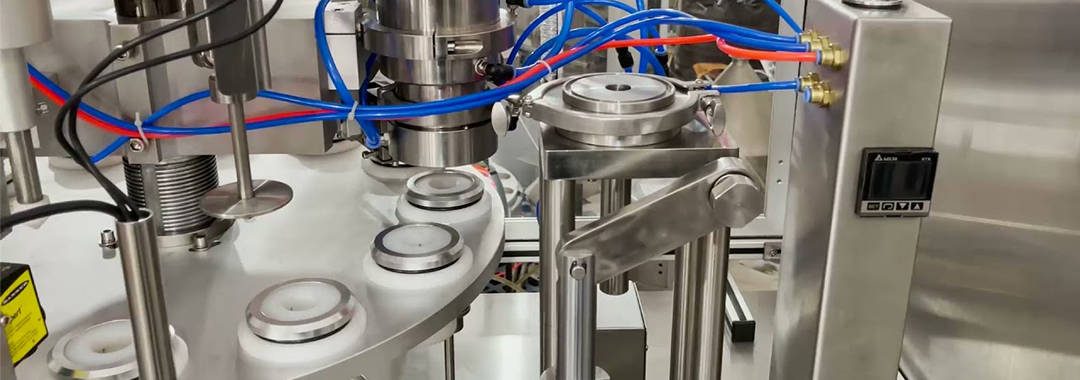
Types of tube filling machines
Tube filling machines consist of a series of main components, but can be configured in infinitely many different ways to suit a specific tube filling requirement. They can also apply additional processes such as labeling, batch coding, crimping, and trimming as required.
Filling machines can be configured to fill according to liquid-levelling principles, volumetric principles, or by weight depending on the specific product requirements.
Types of tube fillers provide varying capabilities, and they come in a range of shapes and sizes depending on the design. However, there are 3 main categories into which tube filling machines are usually segmented.
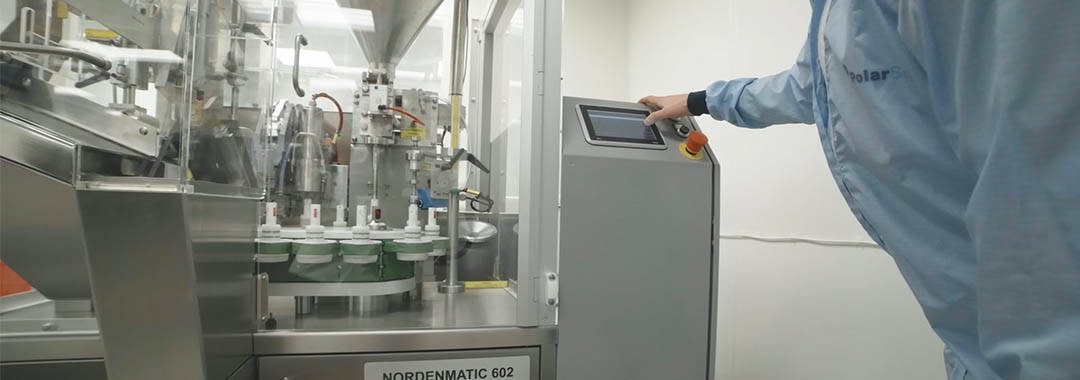
Manual tube filling machines
Manual tube filling machines are best suited for smaller scale productions or laboratories to replace pouring liquids by hand and improve reproducibility. This type of tube filling machine is usually used for filling vials and bottles
Operated manually, these machines do not require a power source and are typically used for packing highly viscous liquids (e.g: creams, gels, shampoos, etc).

Semi-automatic tube filling machines
Semi automatic tube filling machines are widely used in a number of industries, and are usually associated with the production of pastes, adhesives, lotions and creams. They are also used to complete the manufacturing of many wet biomedical products.
To start the filling process an operator is required, after which, the machine will complete the filling and sealing phases of production. They are widely used for production of wet medical devices and suitable for small to medium tube filling contracts.

Fully automatic tube filling machines
Fully automatic tube filling machines are ideal for large scale production applications. They are programmed and require minimal human interaction.
They also have safety mechanisms and cleaning controls, such as tube washing and feeding.
These filling machines commonly used to fill large quantities of laminate tubes, aluminum tubes, and plastic tubes, with speed, reliability and accuracy assisted by full automation.

Components of tube filling machines
Generally, tube filling machines consist of a series of main components, and operate under specific working principles in order to provide accurate and reliable tube filling functionality.
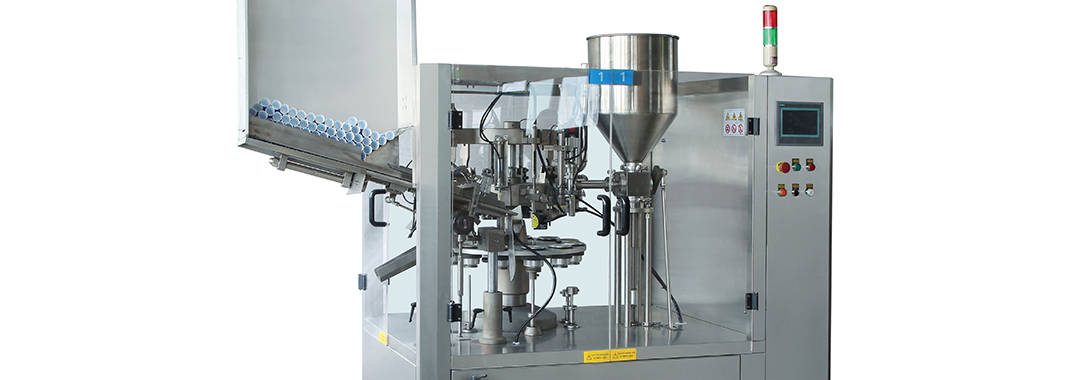
The main components of tube filling machines include:
Frame:
The frame houses internal components of the machines, and it also supports external components that form part of the machine. The frame can be open or sealed depending on the sterility requirements of the product.
Tanks:
Containers, or tanks, are required by a tube filling machine to hold the product/solution that will be distributed to vessels.
Hopper:
The hopper moves material from the tank or storage vessel to the discharge unit. It can also assist with the ejection of sticky and viscous products.
Filling nozzles:
Nozzles are used to control the direction of the fluid flow. Nozzles are one of the most important parts of a tube filling machine, and need to be selected based on the liquid, and the fill volume of the final containers or tubes.
Dosing pump:
The dosing pump is a positive displacement pump designed to provide an accurate flow rate of a solution.
Discharge unit:
The discharge unit ensures an accurate quantity of substance/solution consistently reaches the tubes from the tank.
Tube holders:
Tube holders house and support the vessels being filled during the operation.
Control unit:
The control unit is used to stimulate and regulate different functions, and control parameters, important for effective functioning of the filling machine.
Electronic box:
The electronic box houses electrical components and connections that power the tube filling machine.
Motor:
The motor converts electrical energy into mechanical energy, driving sufficient power for the machine to perform optimal operations.
Coding jaws:
Coding jaws are used to complete the filling and sealing process, and are also used for date and code marking for packaged products.
Safety system
A safety system is in place to provide workers with alerts and alarms that flag minor and major issues with systems.
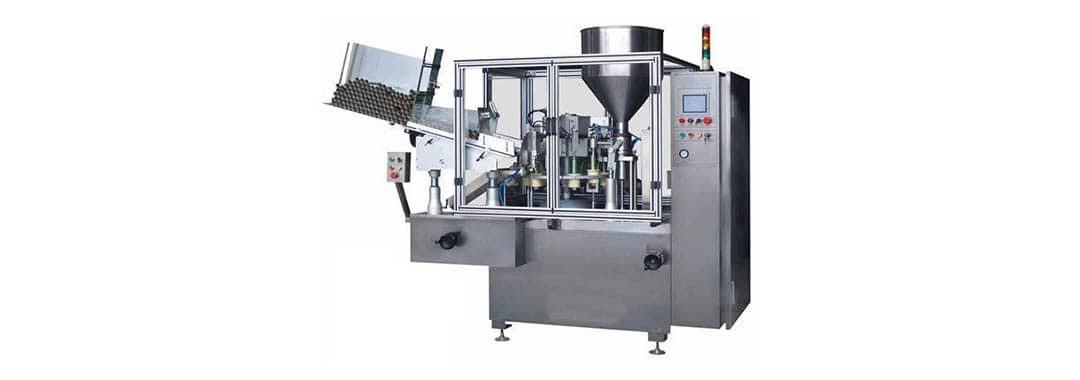
What do tube filling machines cost?
There are many different types of tube filling machines, used for the manufacturing of types of wet medical devices and products. The cost of these machines can vary.
Small filling machines designed for limited volume filling, can be purchased for around 2000-5000 USD. However, industry standard tube filling machines for medical device manufacturing can hold 10 000 USD to over 100 000 USD price tags.
The price of a tube filling machine largely depends on its capabilities. Mass production with specialized requirements may require the purchase of high end, high volume machines that can meet a manufacturer’s demands.
Additional costs should also be considered such as obtaining ISO and FDA accreditation and fitting out a facility for the filling machine especially when aseptic or cleanroom filling is required.
It’s important to get expert help and consultation before purchasing a tube filling machine, and if the cost of buying your own machine seems out of reach, you can always use a contract manufacturing approach, and outsource your fluid-based medical device formulation project to a reputable company.
Benefits of tube filling in medical device manufacturing
Tube filling machines were designed to provide manufacturers with a wide range of benefits when producing liquid or semi-liquid medical products and wet medical devices.
In a manufacturing setting, these machines are essential to deliver a consistent, high quality end product or device on time and efficiently. Read on to find out more!
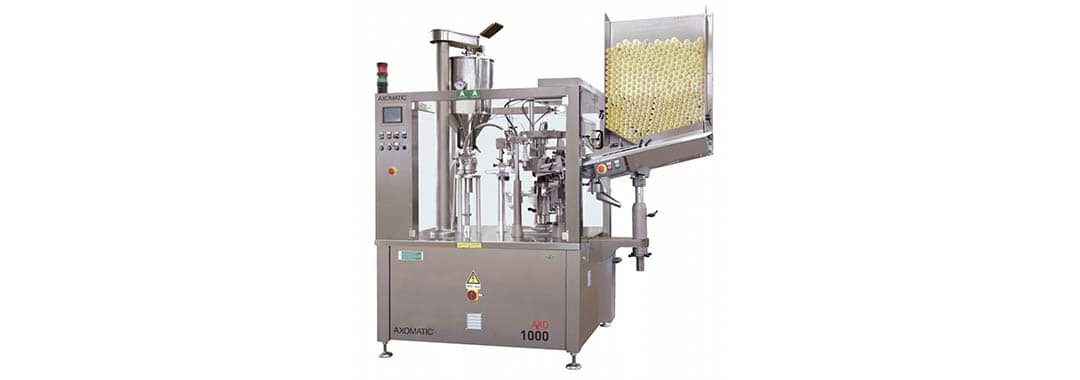
Speed, efficiency and reduced labor requirements
Semi-automatic and fully automatic tube filling machines could be considered an innovation in filling for many wet medical devices and non-medical products. They significantly reduce the labor requirements while simultaneously increasing accuracy, reproducibility and make cleanroom/aseptic manufacturing easier by having less points of human contact.
They also dramatically increase the speed and efficiency of filling – automated filling machines can accommodate filling rates up to 60-120 tubes per minute, enabling medical manufacturers to produce products at a rapid rate.
High throughput accuracy & reduced wastage
Tube filling machines typically have a fill volume error below 1% – meaning that they are incredibly accurate at providing vessels with the perfect amount of a given substance or solution.
The design and calibration of the machine’s system components release the exact quantity of fluid/liquid solution or substance required to fill a medical device. Nozzles ensure the filling process is precise and without waste.
Filling machines multitasking functionality
While tube filling machines, by nature of their broad name, may suggest that they are only used to fill liquid based products, they are able to perform additional important functions.
Tube filling machines are able to clean tubes and containers prior to filling, they can heat seal or crimp post filling, they can sanitize containers, add labels, and add important batch and production markings to the tubes or containers.
Contract manufacturing phases: Liquid formulation and tube filling for medical products
Contract manufacturing is ideal for companies or institutions in the healthcare sector that require an outsourced solution for a stage of manufacturing wet medical devices or for complete, start to finish solutions.
Choosing the right medical manufacturing partner will allow you to follow the manufacturing process as your project progresses through important initial liquid formulation and final production phases. It will also ensure you receive expert advice and assistance from industry experts as well as all necessary ISO and FDA accreditations.
Explore PolarSeal’s approach to contract manufacturing, relevant to tube filling and wet medical device formulation. We assist with projects at any phase of the process outlined below:
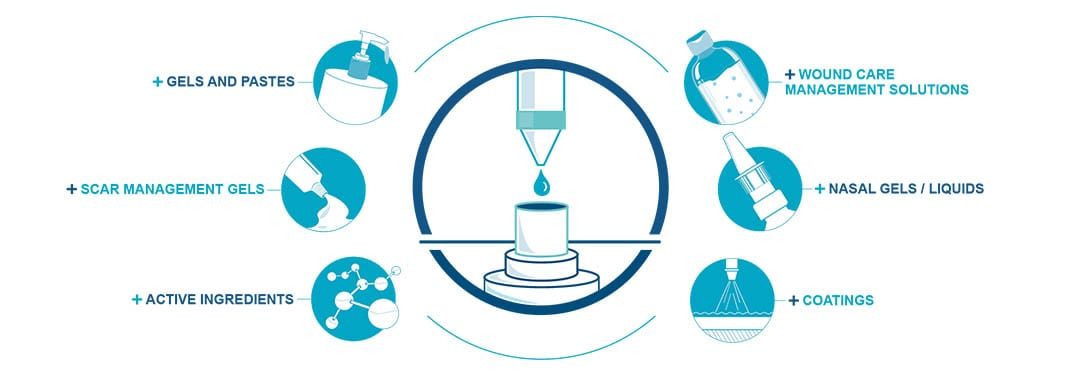
Research & development of liquid formulations
Our research and development capabilities allow us to provide distinct value through the creation of improved products that reduce costs and inefficiencies.
Our cutting edge R&D equipment enables rapid prototyping and refinement using full production machinery.
Regulatory compliance advisory
PolarSeal is registered and audited by the FDA and by a European Notified Body.
Our experienced team is able to provide key advice for meeting regulatory requirements for medical devices.
PolarSeal is also accredited to CE mark, and manufactures our EctoCare range of products which are classified IIb.
Tube sourcing
We are able to source tubes, bottles, vials and jars that meet your requirements and any unique product specifications.
Formulation and filling
We guide clients through the entire product implementation process of fluid-based medical devices and cosmetics, starting from concept to final product delivery for global distribution.
We ensure your product is filled accurately and adheres to the required standards.
Sealing
Once filled, fluid-based medical devices are sealed using a process known as heat welding. Heat welding ensures a watertight and airtight seal, maximizing the lifespan of devices.
Labelling and printing
We provide flexographic printing and inkjet product marking in-line for medical devices and our cutting edge equipment ensures that we achieve the best results on a variety of substrates.
Packaging and logistics
We provide a wide range of package designs and materials to suit all requirements – including moisture and light-resistant packaging. Flow, sleeve, over-wrapping, and cartoning packaging is usually associated with fluid-based medical devices.
Packaging can be printed and include the lot, expiry date, UDI labeling in accordance with medical packaging quality regulations.
Metal particle detection and other detection equipment is used to ensure your medical products are packaged to the very highest of standards.
Market implementation
We help manufacture market ready products by providing our clients with printing, labeling and packaging capabilities, in addition to medical device manufacturing.
Pre-printed labels can also be brought in-house and applied.
Quality assurance & laboratory testing
PolarSeal has an unbroken commitment to quality, adhering to all applicable laws and regulations when producing your wet medical device. We are consistent committed to ISO 13485:2016; MDD 93/42/EEC; ISO 7 Cleanrooms to 14644-1; and we are FDA Registered and Audited.
Expert consulting and process optimization
Our team’s extensive experience within the industry allows us to provide the best solutions for clients that meet their exact requirements.
To optimize the development and manufacturing process, we use our innovative technological advancement.
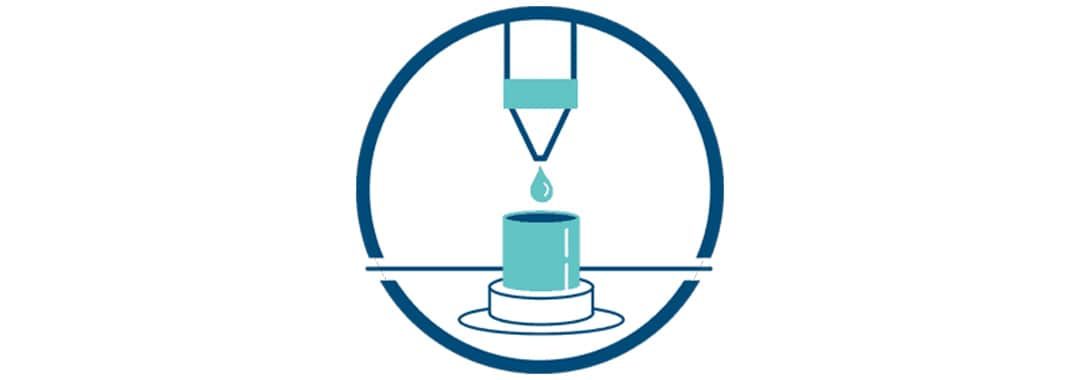
Requirements when using tube filling to manufacture a consumer medical product
The regulatory requirements for your final fluid-based medical device will vary greatly depending on the type of product and where you are going to be selling your product. Our industry experts can provide tailored advice specific to your product.
What is liquid formulation?
Liquid formulation refers to the research, design and formulation of liquid solutions for all types of fluid based medical products and solutions containing active ingredients- from ointments and gels to wound care products, and pastes.
Formulation of medical liquids is normally performed by specialized medical manufacturers that are briefed on your specific requirements in order to approach the project appropriately.
A medical manufacturer will also take the technical and legislative services associated with producing liquid formulations. This is to manage the production of fluids under specific medical standards for medical manufacturing, and to certify products appropriately.
Where can I find a manufacturer for tube filling and wet medical device formulation?
PolarSeal is a leading medical manufacturer providing contract manufacturing services for companies and healthcare institutions across the United Kingdom and the United States.
We also provide an array of services centered around fluid based medical device formulation, including services like tube filling and liquid formulation.
This allows us to produce types of wound management, scar management and nasal gels, as well as ostomy pastes, active ingredients, coatings, cosmetics, manuka honey and more.
Contact us to discuss your project requirements in more detail.
